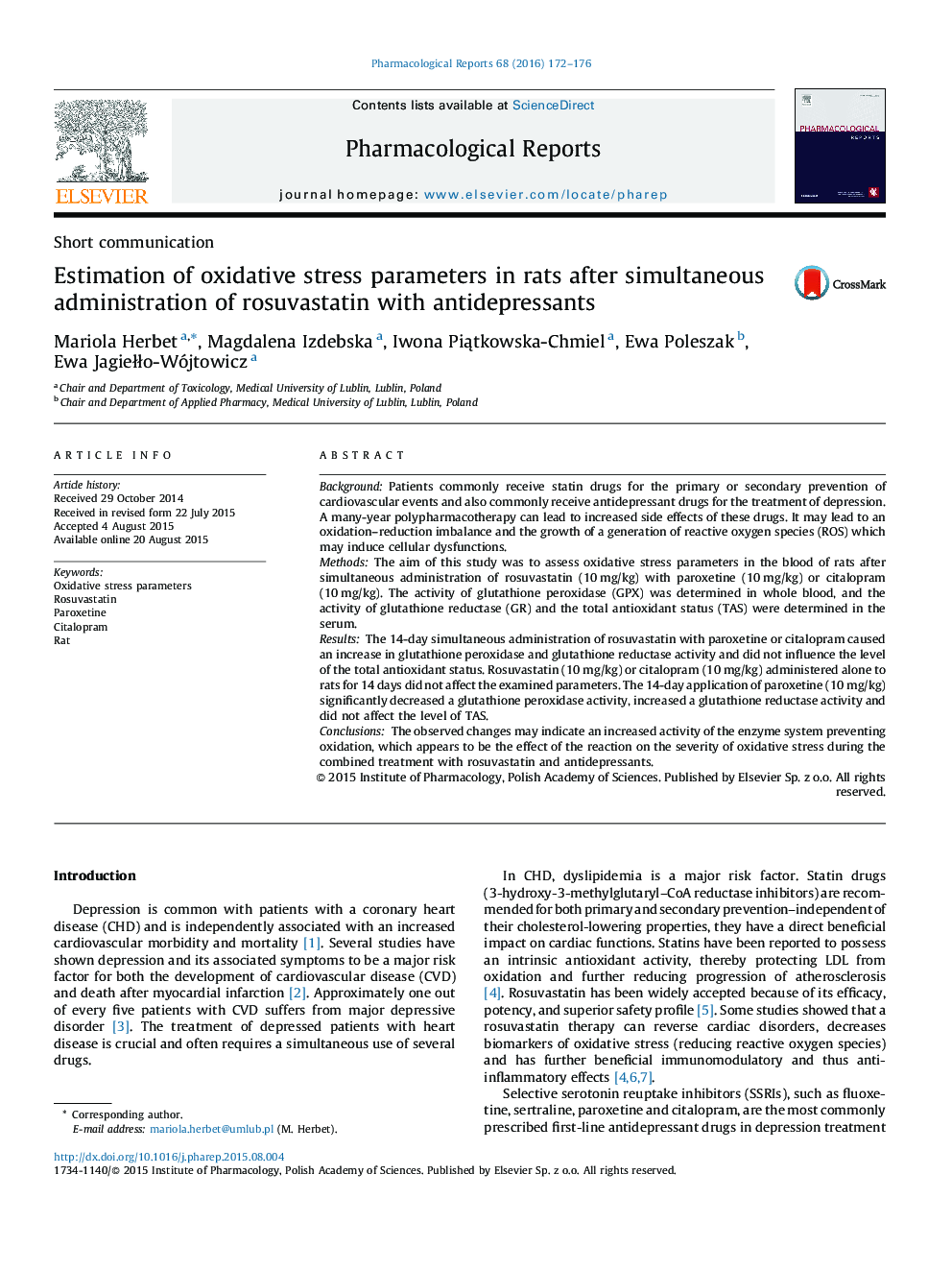| Article ID | Journal | Published Year | Pages | File Type |
|---|---|---|---|---|
| 2010416 | Pharmacological Reports | 2016 | 5 Pages |
BackgroundPatients commonly receive statin drugs for the primary or secondary prevention of cardiovascular events and also commonly receive antidepressant drugs for the treatment of depression. A many-year polypharmacotherapy can lead to increased side effects of these drugs. It may lead to an oxidation–reduction imbalance and the growth of a generation of reactive oxygen species (ROS) which may induce cellular dysfunctions.MethodsThe aim of this study was to assess oxidative stress parameters in the blood of rats after simultaneous administration of rosuvastatin (10 mg/kg) with paroxetine (10 mg/kg) or citalopram (10 mg/kg). The activity of glutathione peroxidase (GPX) was determined in whole blood, and the activity of glutathione reductase (GR) and the total antioxidant status (TAS) were determined in the serum.ResultsThe 14-day simultaneous administration of rosuvastatin with paroxetine or citalopram caused an increase in glutathione peroxidase and glutathione reductase activity and did not influence the level of the total antioxidant status. Rosuvastatin (10 mg/kg) or citalopram (10 mg/kg) administered alone to rats for 14 days did not affect the examined parameters. The 14-day application of paroxetine (10 mg/kg) significantly decreased a glutathione peroxidase activity, increased a glutathione reductase activity and did not affect the level of TAS.ConclusionsThe observed changes may indicate an increased activity of the enzyme system preventing oxidation, which appears to be the effect of the reaction on the severity of oxidative stress during the combined treatment with rosuvastatin and antidepressants.
